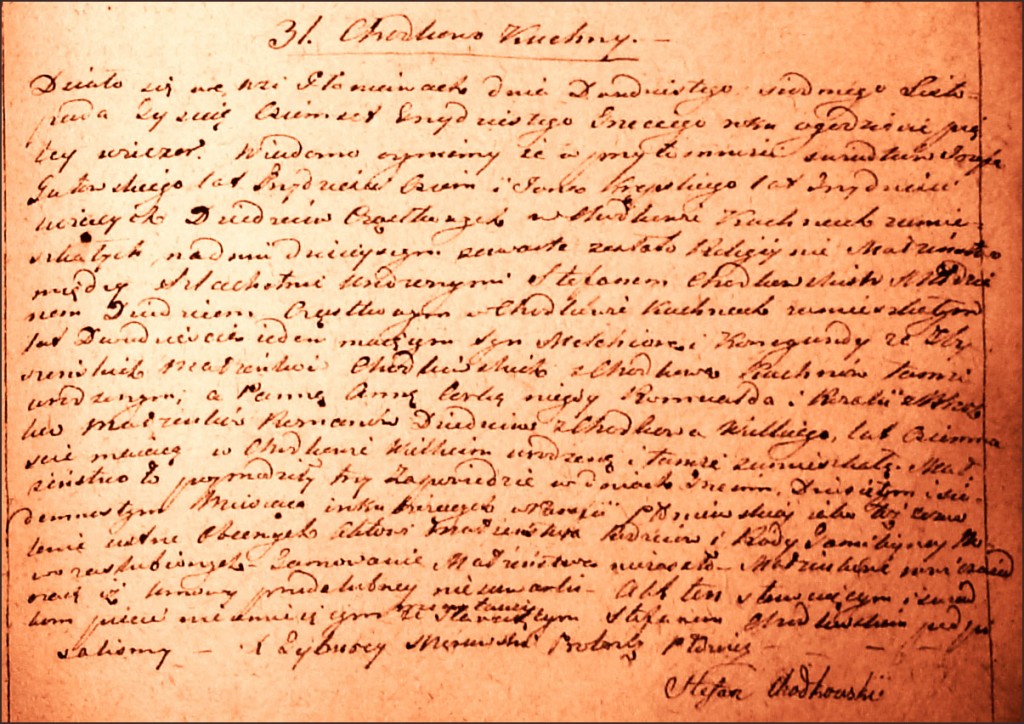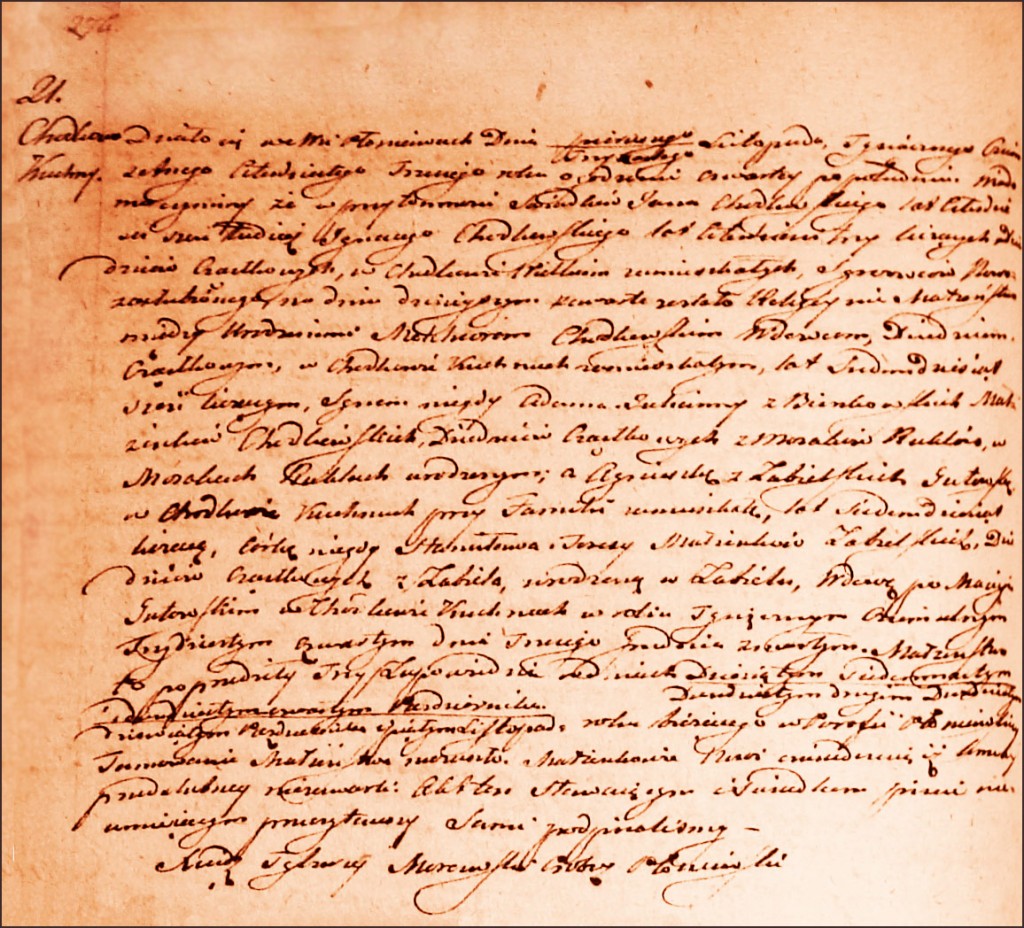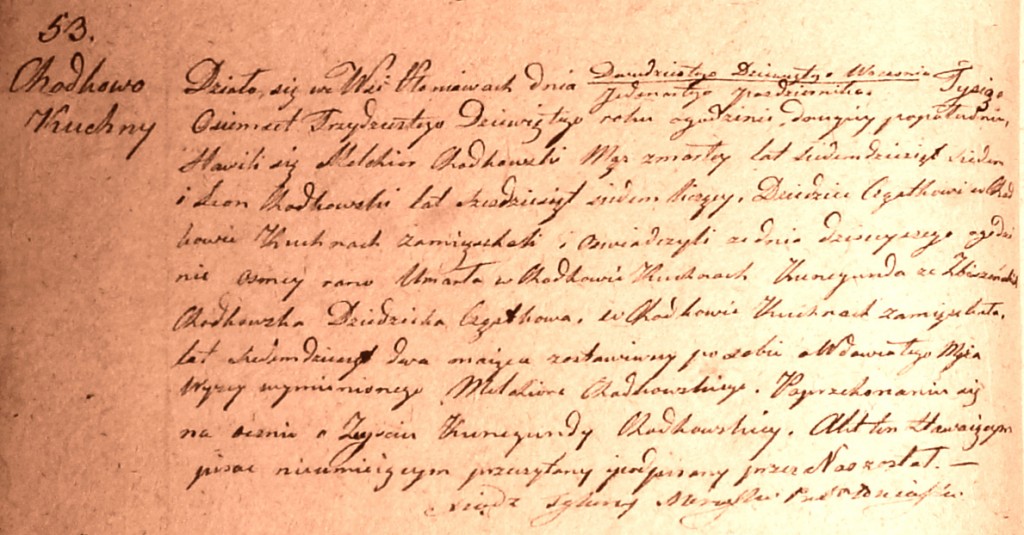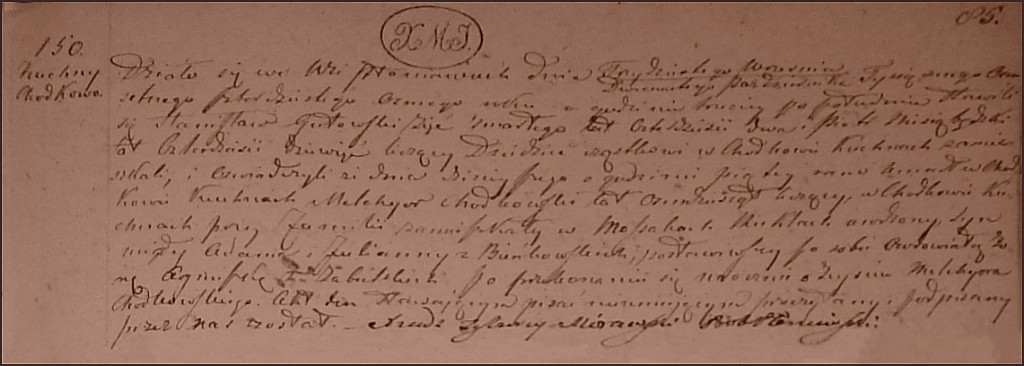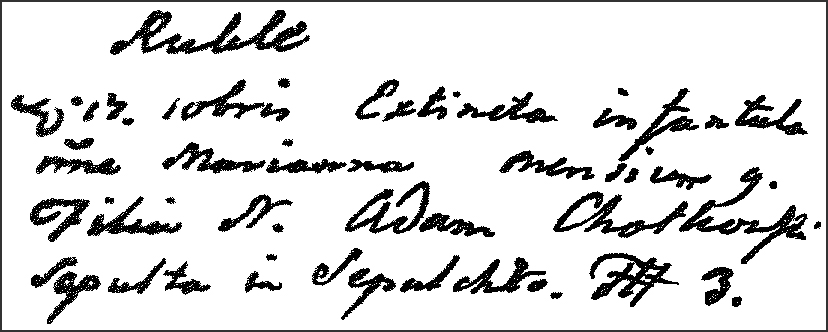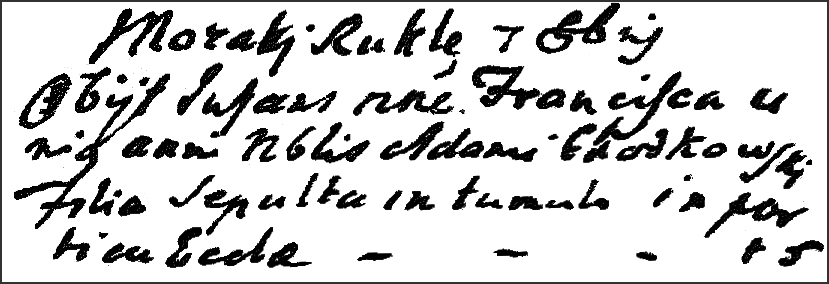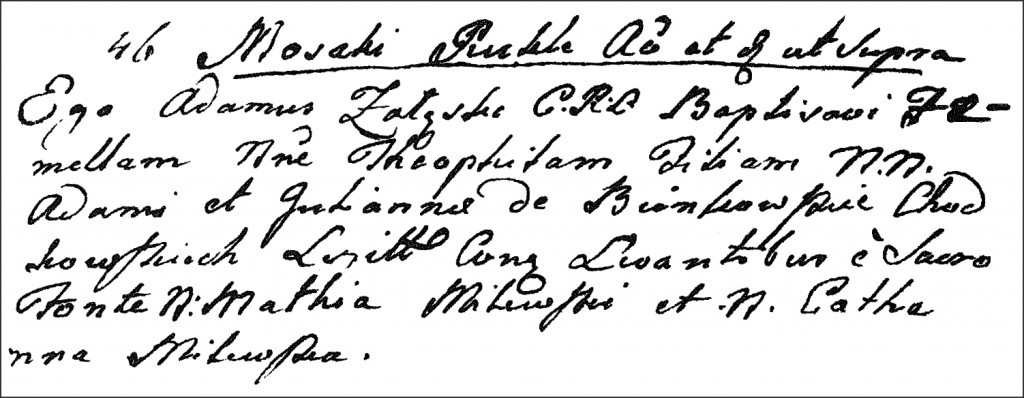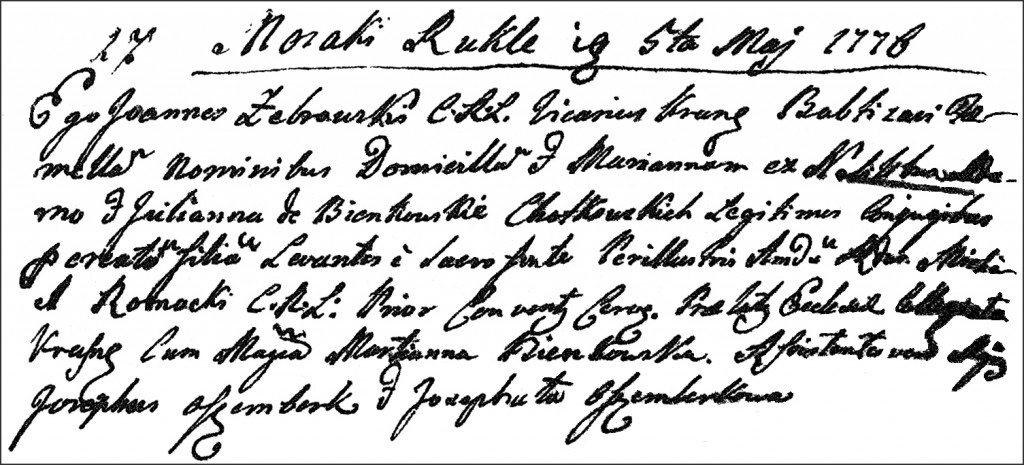Stefan Chodkowski, son of Melchior Chodkowski and Kunegunda Zbyszyńska, and Anna Roman, daughter of Romuald Roman and Rozalia Wroszek, were married in the parish church in Płoniawy, Maków Powiat, Płock Gubernia, Congress Kingdom of Poland on 27 November 1833.
SOURCE: Parafia pw. św. Stanisława BM (Płoniawy, Maków Powiat, Płock Gubernia, Congress Kingdom of Poland), “Akta metrykalne par. Płoniawy; Akta zaślubionych 1826-1848. [Metrical records of the parish of Płoniawy; Marriage records 1826-1848],” page 117, entry 31, StefanChodkowski and Anna Roman, 27 Nov 1833; The Archives of the Roman Catholic Diocese of Płock, Płock, Poland.
Click on the image above to view a higher resolution image. Click on the link for a PDF copy of the Marriage Record of Stefan Chodkowski and Anna Roman. Translated from the Polish, the record reads:
31. Chodkowo Kuchny
This happened in the village of Płoniawy on the twenty-seventh day of November in the year one-thousand eight-hundred thirty-three at the hour of five in the evening, we make it known that in the presence of witnesses Józef Gutowski age thirty-eight, and Jan Krejski age thirty, owners of parts [of the village] residing in Chodkowo kuchny. On this day, a religious marriage was contracted between the noble and well-born Stefan Chodkowski, a young man and owner of a part [of the village], residing in Chodkowo kuchny, age twenty-one, son of Melchior Chodkowski and his wife Kunegunda née Zbyszyńska, also born in Chodkowo kuchny, and the maiden Anna Roman, age eighteen, daughter of the deceased Romuald Roman and his wife Rozalia Wroszek, owners of Chodkowo wielkie, born in Chodkowo wielkie and also residing there. This wedding was preceded by three readings of the banns on the third, tenth, and seventeenth days of this same month and year in the parish of Płoniawy, [and also after reading?] the marriage acts of the parents and family of the newly-married couple, no impediment to the marriage arose. The newlyweds stated that they had made no prenuptial agreement. This document was read aloud to the declarants and witnesses who do not know how to write and was signed by the declarants Stefan Chodkowski. The Reverend Tyburcy Morawski, Pastor of Płoniawy
                   [signed] Stefan Chodkowski
Stefan Chodkowski was my 4th cousin 4X removed. According to this marriage record, he was born in Chodkowo kuchny in about 1812, but I am not aware that any baptismal records exist for the parish church in Płoniawy for that year.
Copyright © 2009 by Stephen J. Danko

